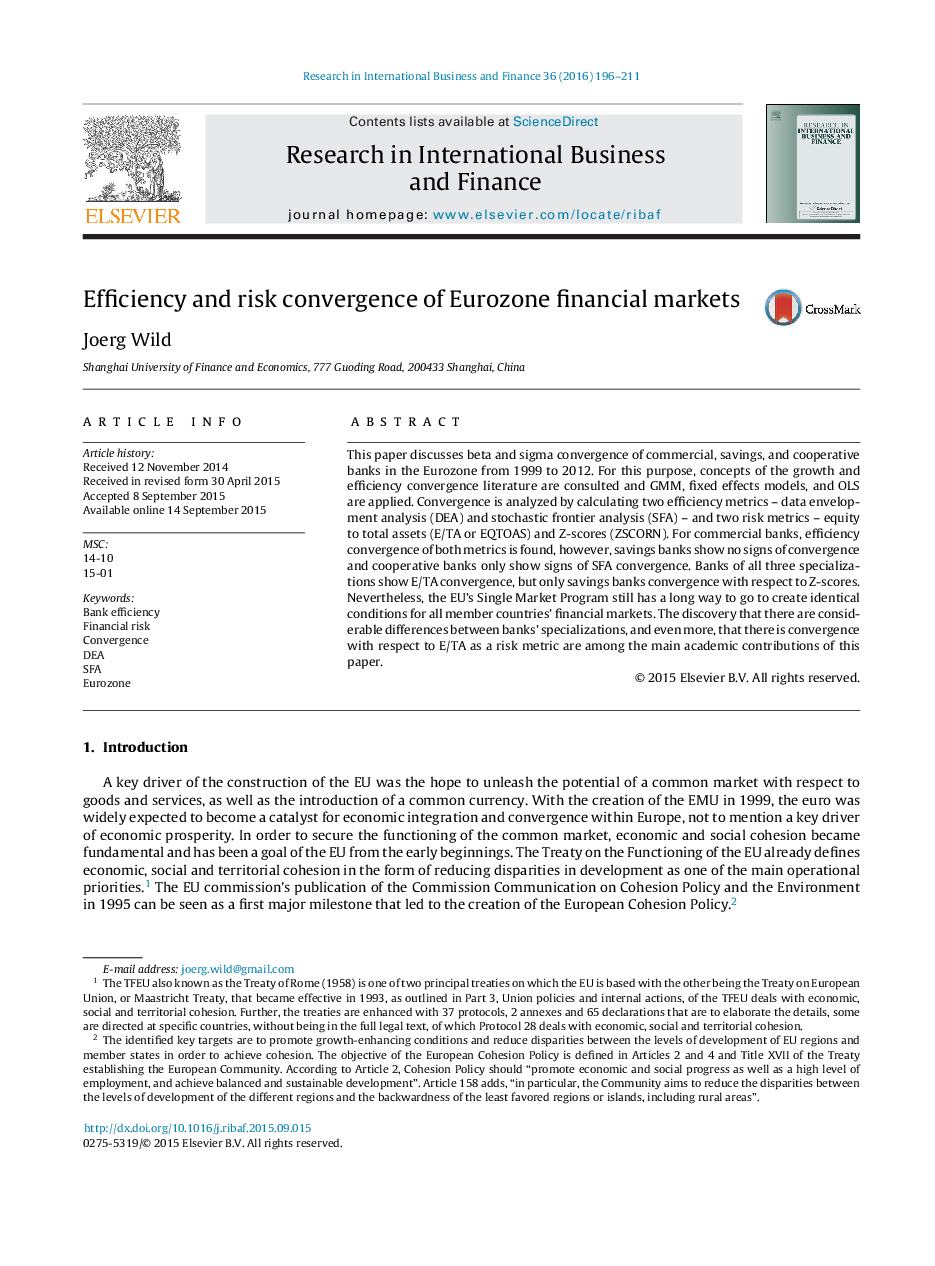| Article ID | Journal | Published Year | Pages | File Type |
|---|---|---|---|---|
| 1003509 | Research in International Business and Finance | 2016 | 16 Pages |
•Convergence of financial markets is evaluated with respect to efficiency and risk.•Commercial, savings, and cooperative banks across 12 Eurozone countries from 1999 to 2012 build the sample.•Two measures of efficiency (DEA and SFA) and two measure of risk (E/TA and Z-score) are considered.•Financial markets converge mainly for commercial banks but to a much lesser degree for savings and cooperative banks.
This paper discusses beta and sigma convergence of commercial, savings, and cooperative banks in the Eurozone from 1999 to 2012. For this purpose, concepts of the growth and efficiency convergence literature are consulted and GMM, fixed effects models, and OLS are applied. Convergence is analyzed by calculating two efficiency metrics – data envelopment analysis (DEA) and stochastic frontier analysis (SFA) – and two risk metrics – equity to total assets (E/TA or EQTOAS) and Z-scores (ZSCORN). For commercial banks, efficiency convergence of both metrics is found, however, savings banks show no signs of convergence and cooperative banks only show signs of SFA convergence. Banks of all three specializations show E/TA convergence, but only savings banks convergence with respect to Z-scores. Nevertheless, the EU's Single Market Program still has a long way to go to create identical conditions for all member countries’ financial markets. The discovery that there are considerable differences between banks’ specializations, and even more, that there is convergence with respect to E/TA as a risk metric are among the main academic contributions of this paper.
Graphical abstractFigure optionsDownload full-size imageDownload as PowerPoint slide
